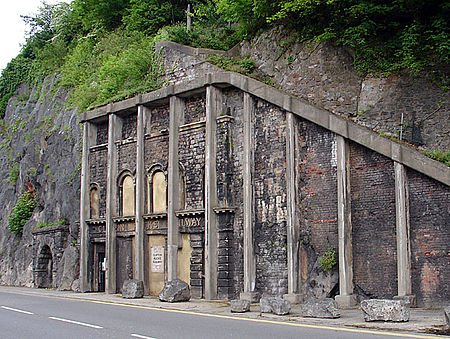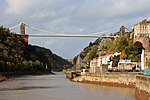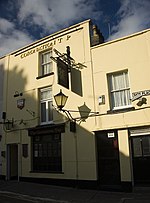Clifton Rocks Railway
3 ft 2 in gauge railways in EnglandBristol HarboursideClifton, BristolDefunct funicular railwaysEngvarB from June 2017 ... and 10 more
Funicular railways in the United KingdomHistory of BristolPages with no gauge entered in Infobox rail lineRail transport in BristolRailway companies disestablished in 1934Railway lines opened in 1893Underground funicularsUnderground railways in the United KingdomWater-powered funicular railwaysWorks by George Croydon Marks

The Clifton Rocks Railway was an underground funicular railway in Bristol, England, linking Clifton at the top to Hotwells and Bristol Harbour at the bottom of the Avon Gorge in a tunnel cut through the limestone cliffs. The upper station is close to Brunel's famous Clifton Suspension Bridge and is located adjacent to the former Grand Spa Hotel (now the Avon Gorge Hotel). The lower station was opposite the paddle steamer landing ferries in Hotwells, Hotwells railway station of the Bristol Port Railway and Pier, a terminus of Bristol Tramways and the Rownham ferry enabling connections across the river Avon.
Excerpt from the Wikipedia article Clifton Rocks Railway (License: CC BY-SA 3.0, Authors, Images).Clifton Rocks Railway
Geographical coordinates (GPS) Nearby PlacesShow on map
Geographical coordinates (GPS)
| Latitude | Longitude |
|---|---|
| N 51.454 ° | E -2.6254722222222 ° |








